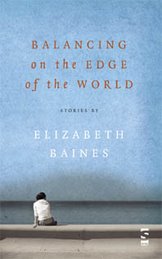Thursday, December 06, 2012
Review: 1930s Fashion: The Definitive Sourcebook, Edited by Charlotte Fiell and Emanuelle Dirix
What do I do when I'm setting a novel or a story in the past, and I want to refer to characters' clothing? I look at old photos, of course. What do I do when I'm producing or acting in a play set in the past? Ditto, of course. And what do I do when I have a spare afternoon? Scour the charity shops for vintage to wear NOW, of course.
So imagine my delight when the publishers sent me this book: over 600 original photographs and illustrations of the fashions of the thirties - drawings taken from fashion periodicals and mail order catalogues of the time and Hollywood studio press shots - and with an introduction by leading fashion historian Emmanuelle Dirix which sets the developing style of the era in the context of the two shattering world events that framed it: the Wall Street Crash and World War Two.
One thing that struck me immediately was the difference between my own impression of the way people dressed in the early thirties, as illustrated in our family photos - with a distinct overhang of twenties flapper style on the younger women (straight up-and-down dresses, dropped waists) and the older women still in Edwardian-style dresses - and the more forward-looking style presented here, figure-hugging and fluid and developing fairly early on in the decade into the styles I don't see on my family until war time - big shoulders and blouson waists. The introduction neatly addresses this issue, pointing out that fashion is about fantasy and ideals, and at the start of the decade the privilege of an elite able to patronise the couture houses. However, Dirix traces the way that the Depression broke down this divide and led to a democratisation of fashion, with Paris fashion houses offering ready to wear and even 'sew up your own to fit' ready-tailored garment pieces, and the rise of department stores and mail order catalogues. The Hollywood talkies also brought glamorous fashion and its escapism into the purview of ordinary women, explaining the apparent contradiction of this era, associated as it is with both glamour and economic recession.
Maybe it's the book nerd in me, but I'd have liked some information about the publications from which the illustrations were taken, and maybe it's the history nerd in me, but I badly wished that the illustrations had been presented more chronologically, in order to show the development Dirix describes. As the decade wore on, and 'the rumbles of warmongering grew louder', she tells us, more functional, military-style garments began to appear, so it seemed odd to me that the first section, 'Daywear' should open, rather than end, with a colour photo spread of two such dresses from 1936, and that there was no chronological pattern to the presentation of images that I could detect. Also, I was fascinated by the distinction made in the captions between 'day dresses' and 'afternoon dresses' - I'm no fashion history expert after all - a distinction I could not always detect in the dresses themselves, but I'll have to go elsewhere to investigate that little socio-historical matter: the book doesn't address it.
However, this book is a veritable feast for theatre and film wardrobe departments, fashion historians, fashion enthusiasts, and vintage wearers everywhere. If it hadn't been sent to me by the publisher, I would definitely be asking for it for Christmas. At the bottom of this post you'll find the details of how to buy it, and in the meantime, here are some of the hundreds of gorgeous images:
First, two evening dresses from Tres Chic - Selection Reunis, 1932:
Three images from Tres Parisien, 1933:
and actress Madeleine Carroll in 'It's All Yours', 1938:
1930s Fashion: The Definitive Sourcebook is published by Goodman Fiell, has an RRP of £30 and is available from www.carltonbooks.co.uk as well as Amazon and all good book stores.
Subscribe to:
Post Comments (Atom)
















1 comment:
Thanks for sharing, we also offer clothing and accessories like cashmere gloves for men that you can try on and enjoy the unparalleled comfort and warmth, making them a must-have for the colder months.
Post a Comment